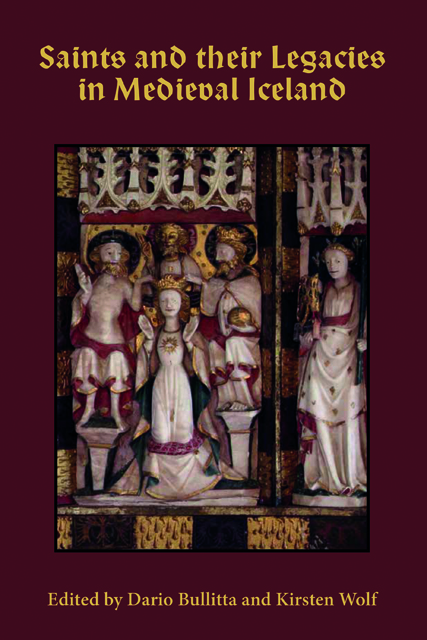Book contents
- Frontmatter
- Contents
- List of Illustrations
- List of Contributors
- Acknowledgments
- List of Abbreviations
- Introduction: The Splendor of the Saints
- Rannsǫkun Heilagra Bóka: The Search for Holy Books
- Heilagir Byskupar: Holy Bishops
- Heilagir Karlar ok Englar: Holy Men and Angels
- Heilagar Meyjar: Holy Maidens
- Bibliography
- Index of Manuscripts
- General Index
- Studies in Old Norse Literature
9 - The Lore of St Dominic in Medieval Iceland and Norway
Published online by Cambridge University Press: 14 January 2023
- Frontmatter
- Contents
- List of Illustrations
- List of Contributors
- Acknowledgments
- List of Abbreviations
- Introduction: The Splendor of the Saints
- Rannsǫkun Heilagra Bóka: The Search for Holy Books
- Heilagir Byskupar: Holy Bishops
- Heilagir Karlar ok Englar: Holy Men and Angels
- Heilagar Meyjar: Holy Maidens
- Bibliography
- Index of Manuscripts
- General Index
- Studies in Old Norse Literature
Summary
In 2016, the Dominican Order celebrated the 800th anniversary of the confirmation of the order, also known as the ‘Ordo Praedicatorum’ (‘Order of Preachers’). The Order was founded by Dominic of Caleruega (1170–1221), also called Dominic de Guzmán, with the approval of Pope Honorius III (1150–1227) in 1216. Inspired by this event, I examined the dissemination of information about St Dominic in Norway and Iceland. The Old Norse-Icelandic legend of St Dominic is preserved in Reykjahólabók, which has been dated to around 1530–1540. The codex is a legendary based for the most part on a now-lost Low German version of the High German Der Heiligen Leben. In addition, relevant episodes about St Dominic are preserved in Maríu saga. These episodes cover features of the traditional lore of the saint and are clearly based on a version different from that in Reykjahólabók.
Dominican religious houses existed in Scandinavia, but there is no evidence of any Dominican institution in Iceland. Margaret Cormack is of the opinion that St Dominic enjoyed a very limited cultus in medieval Iceland and mentions the fact that there was only one church dedication, at Kolbeinsstaðir (in south-western Iceland), where he was listed as a co-patron probably by the Dominican Jón Halldórsson, who came from the Dominican friary in Bergen and became bishop of Skálholt in 1322. The Nikulásskirkja at Kolbeinsstaðir was (re)consecrated during his episcopate, though Cormack mentions the possibility that the decision to dedicate the church to St Dominic was made by one of his successors at the see of Skálholt, the Danish Bishop Vilkin Hinriksson (d. 1405), who was also a member of the Dominican Order. It is in his 1397 inventory that the consecration is first recorded.
This article investigates Old Norse-Icelandic texts dealing with St Dominic in an attempt to determine how and in what kind of form information about him found its way to Iceland and seeks to relate this information to the history of the Dominican Order in medieval Norway.
St Dominic died on August 6 1221, and was buried ‘Sub pedibus Fratrum’ (‘under the brethren’s feet’) in the Church of St Nicholas of the Vineyards in Bologna.
- Type
- Chapter
- Information
- Saints and their Legacies in Medieval Iceland , pp. 229 - 248Publisher: Boydell & BrewerPrint publication year: 2021



